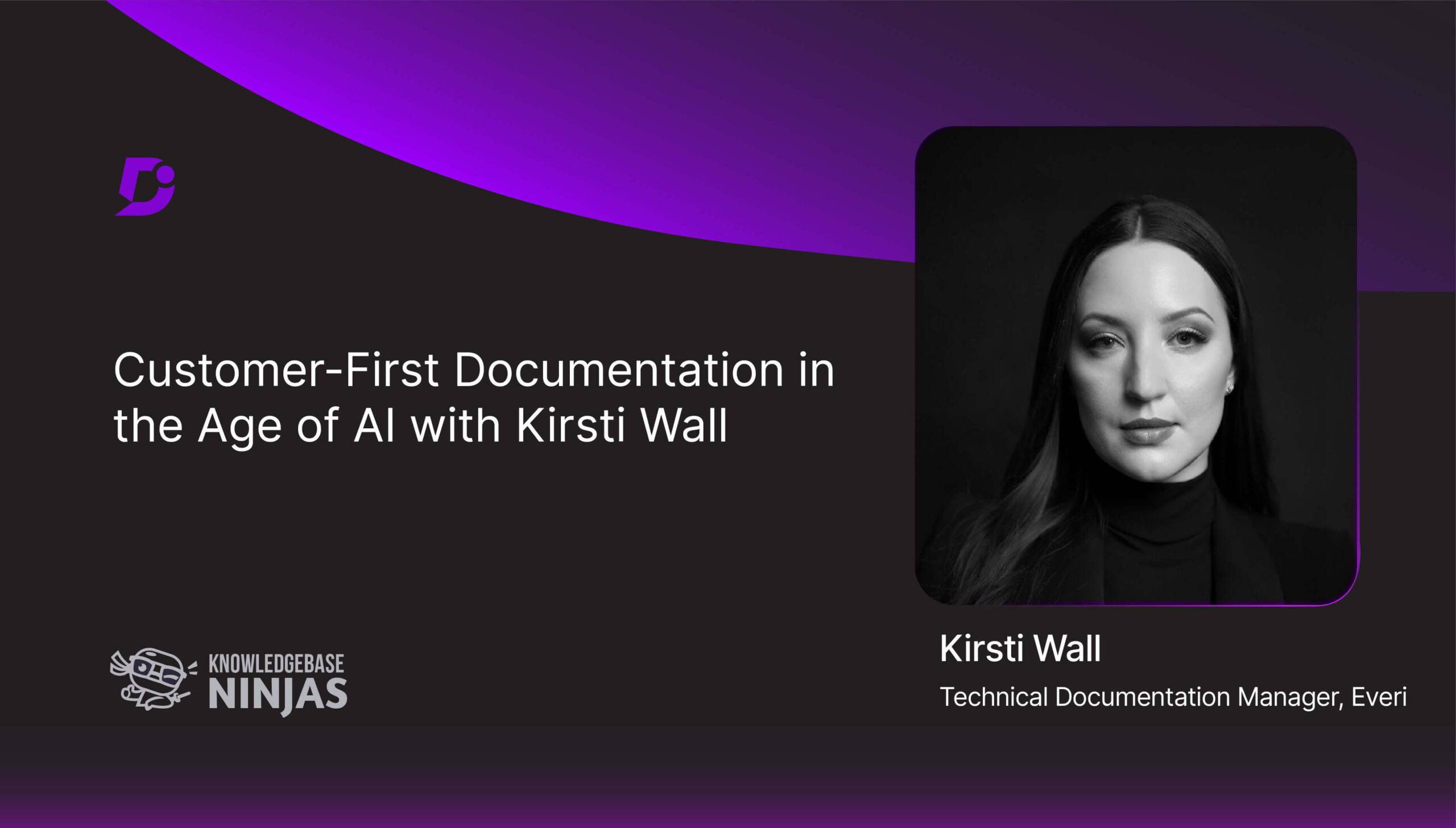Naomi Papoushado, Director Of Product Content Strategy Management And UX Writer at Gong.io joined us in this episode of Knowledgebase Ninjas and shared her journey and expertise in technical writing and documentation. Check out all the other episodes of Knowledgebase Ninjas.
Connect with Naomi and Gong.io here:
Key Takeaways:
How did Naomi get into technical writing?
20 years ago, Naomi had a time where she was unsure about her career path, and a colleague mentioned technical writing to her. The idea of being a technical writer appealed to her to the extent that she took a course and stepped into the world of technical writing.
Naomi shares that career opportunities for writers are vast because when it comes to the tech industry, being able to provide product knowledge to the customer is vital, whether it’s through UX writing or documentation.
The process followed at Gong.io
Niomi is the only person on the documentation team. She sits with the product team and UX writing team to keep a grip on upcoming product features. At Gong.io, the documentation process is very integrated between product development and UX writing, as they conduct regular meetings with the development team. This means that everyone stays in the loop and Niomi has the information needed about the product to be able to plan the content.
Knowing your audience in documentation
For Niomi, the most important thing is knowing your audience.
Gone are the days of writing a large pdf with lots of screen captures. The audience nowadays are very tech-savvy, so there’s no need to waste the writer’s and the client’s time by highlighting the basics. This helps make the content targeted and more focussed on giving the users the information they are looking for.
Naomi shared that interviews with customers and with partners are very helpful in finding out what information is needed and what the user’s needs are.
Deciding the type of writing and measuring documentation
Depending on the type of information that has to be provided, Naomi will then decide the best writing process. Sometimes it has a marketing twist and can be written as release notes. With very technical work she might prefer to put it as a support message or in FAQs (frequently asked questions). It’s up to the writer to see which format suits the information best.
Naomi likes to keep track of the documentation through analytic tools. If clients aren’t using FAQs then the information shouldn’t be put there! She uses SiteSense, Zendesk, and Google Analytics to track the documentation as well as keep an eye on client engagement.
Does quality documentation have an effect on the workload?
Naomi says that all documentation should be of high quality. This does mean the writer will take longer to complete the documentation but this is the way with modern technology there will be constant updates, but you should aim to work towards perfection. Ideally, this should help decrease the need for customers to need support because they should be able to do ‘self-service’ in case of any issues and not have to wait for help.
The future of technical writing?
With 20 years of experience, and having witnessed the changing trends. Naomi thinks that changing trends are constant, however, content production will keep on increasing with which content creators have to keep in mind to provide readers with small and digestible dosages.
The use of video will increase, and people will move towards more of an informative interactive pop-up.
Who has inspired Naomi in technical writing?
Niomi gives credit to all her previous bosses for helping her reach where she is today.
Naomi’s favourite documentation related resources:
One piece of advice Naomi would give her twenty-year-old self…
Don’t be afraid to experiment! Try different fields of work to see what you like and where your strengths are, then choose a career to take forward.
Subscribe To Knowledgebase Ninjas:





 –
– 

